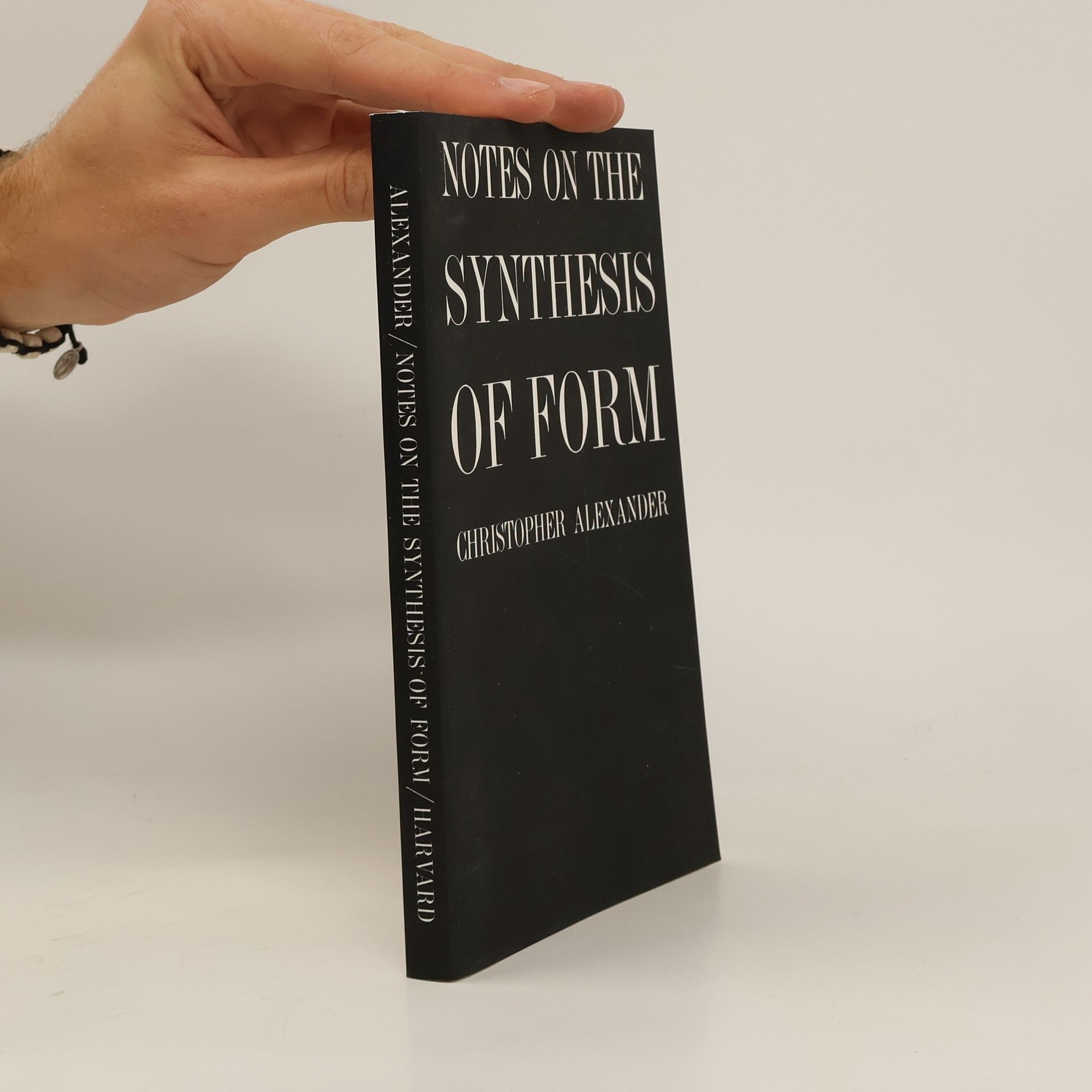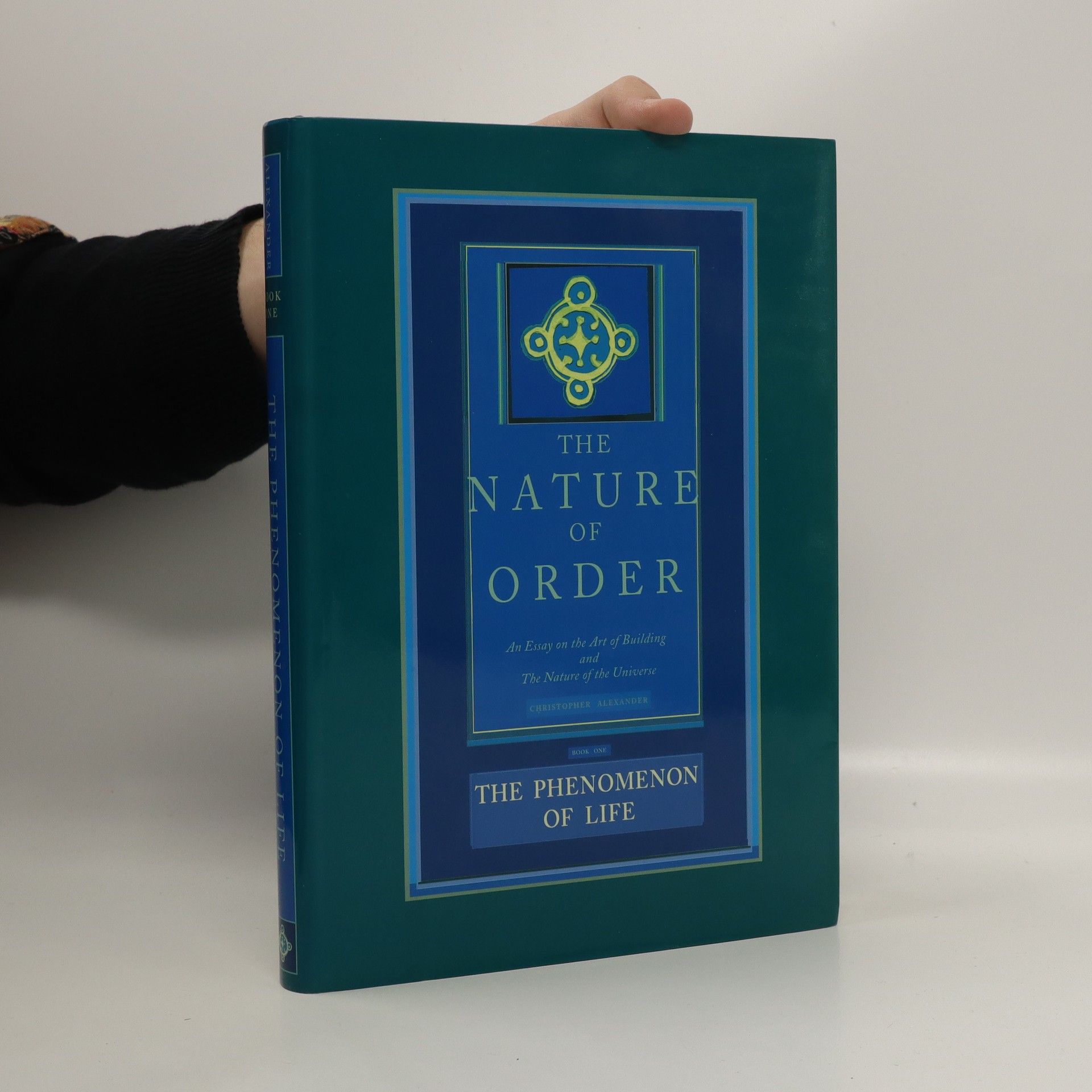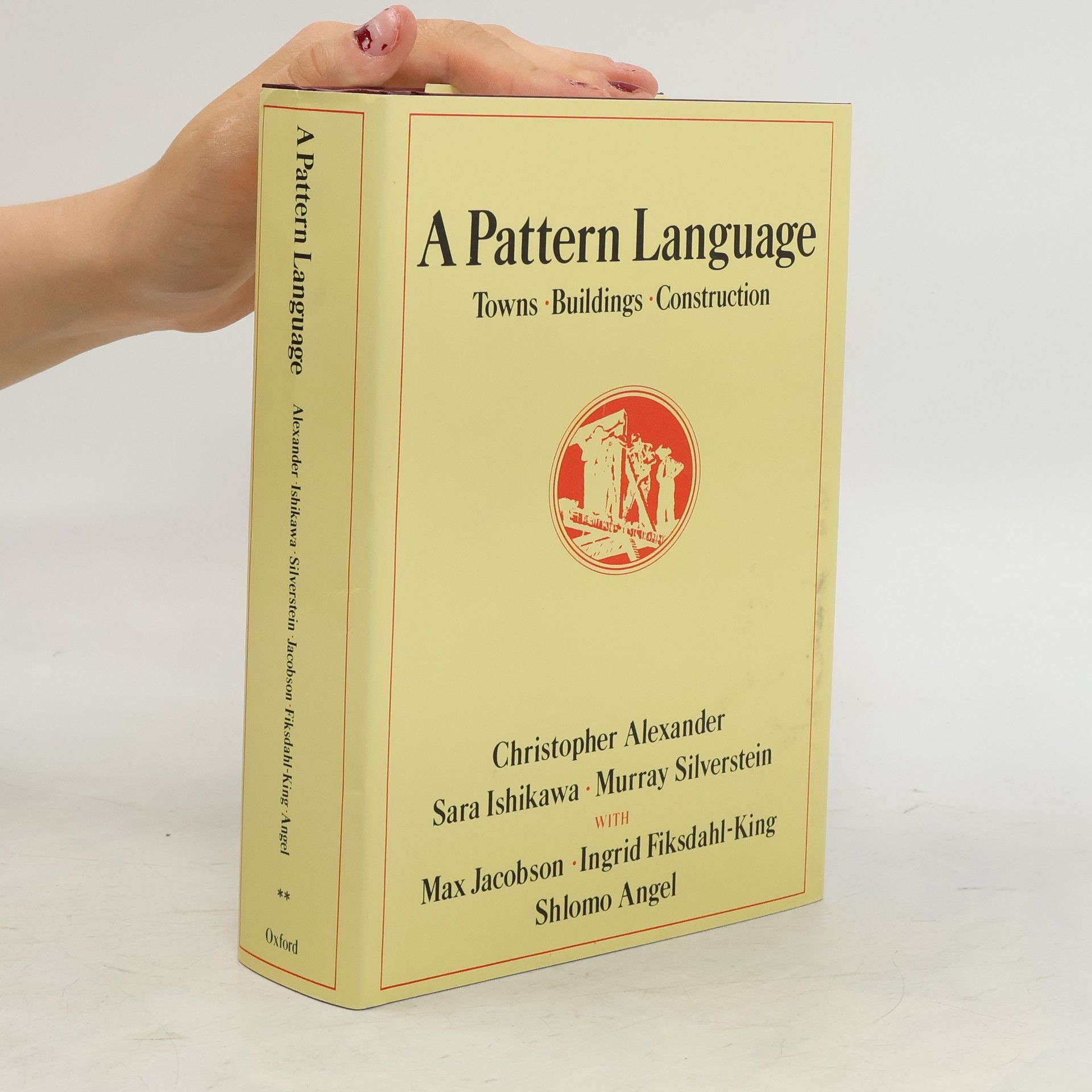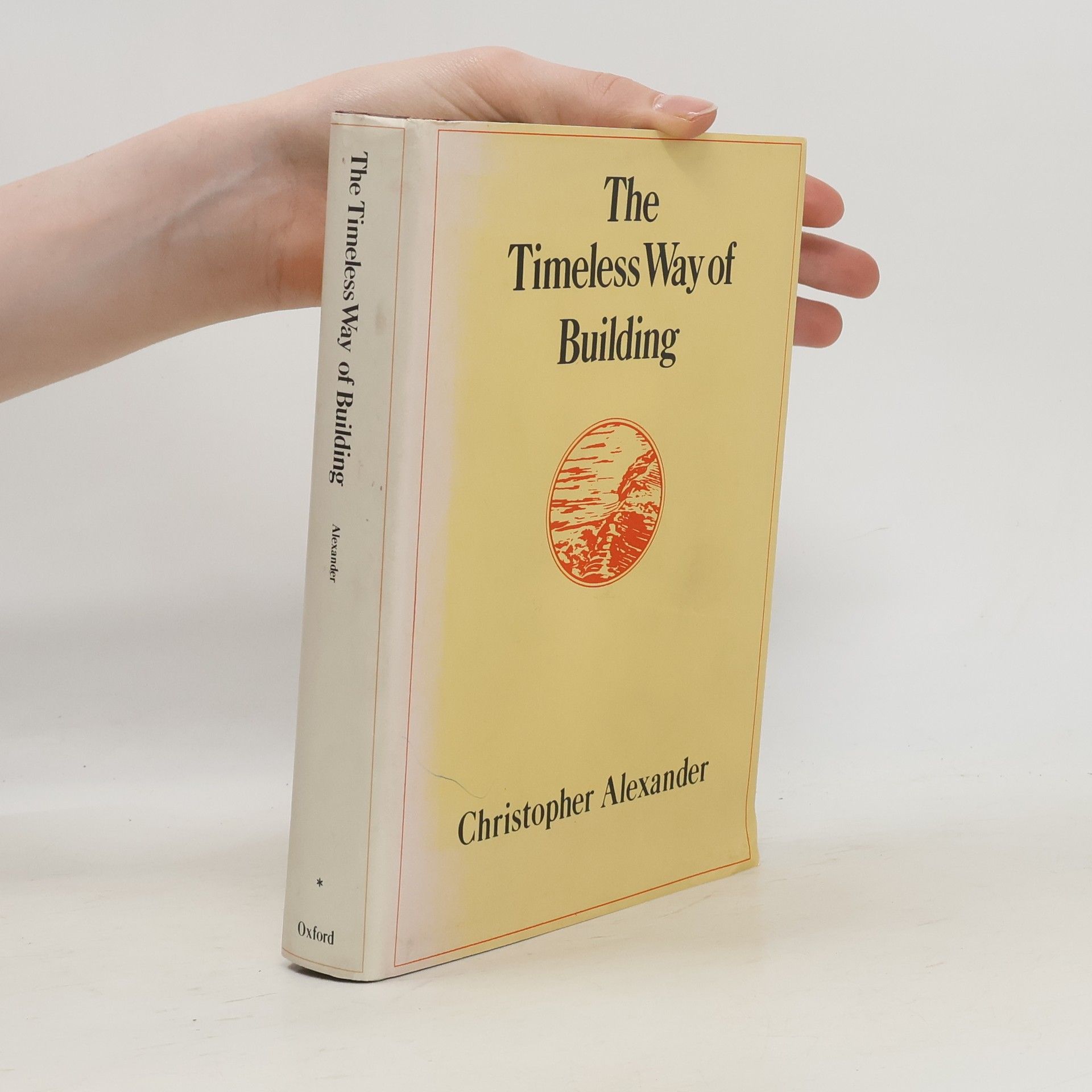Veteran traveler and textile expert Chris Aslan explores the Silk, Wool and Cotton Roads of Central Asia. Three textile roads tangle their way through Central Asia. The famous Silk Road united east and west through trade. Older still was the Wool Road, of critical importance when houses made from wool enabled nomads to traverse the inhospitable winter steppes. Then there was the Cotton Road, marked by greed, colonialism and environmental disaster. At this intersection of human history, fortunes were made and lost through shimmering silks, life-giving felts and gossamer cottons. Chris Aslan, who has spent fifteen years living and working in the region, expertly unravels the strands of this tangled history and embroiders them with his own experiences of life in the heart of Asia.
Christopher Alexander Book order







- 2024
- 2020
A City is Not a Tree: 50th Anniversary Edition
- 236 pages
- 9 hours of reading
In 1965, Christopher Alexander offered a groundbreaking critique of modern urban design, focusing on structural analysis informed by mathematics and cognition rather than social or political arguments. This anniversary edition features Alexander's original text alongside new commentaries and discussions from prominent theorists and practitioners, making it a vital resource for contemporary students and professionals in the field. The work continues to influence discussions on design and architecture, highlighting its lasting relevance.
- 2020
O stavitelském umění a podstatě univerza. Kniha první: Fenomén života
- 480 pages
- 17 hours of reading
Architektonické prostředí má výrazný vliv na kvalitu života jeho uživatelů, a to v celé své šíři – fyzické, psychické, sociální i spirituální. Vztah architektury k vitalitě těch, jež obklopuje, byl teoreticky zpracován různými autory, zmiňme například úspěšnou knihu Nikose A. Salingarose Sjednocená teorie architektury. Forma, jazyk, komplexita (česky 2017). Nepřekonanou klasikou však zůstává obsáhlé čtyřsvazkové dílo amerického architekta rakouského původu Christophera Alexandera Podstata řádu, a to zejména jeho první svazek Fenomén života. Alexander se snaží o uchopení elementárních principů tradiční architektury a nabízí porozumění tomu, co vytváří život, krásu a funkčnost jak v budovách, městech a krajině, tak v místnostech, zákoutích a detailech předmětů, které používáme. Popisuje geometrická pravidla, s jejichž pomocí se skládají jednotlivé architektonické prvky do celků vyvolávajících pozitivní a prospěšnou odezvu. Tato pravidla odrážejí tvořivé pochody uvnitř organismů a ekosystémů, podivuhodně vyvažující neustálé vznikání nového a udržování harmonie. Kniha propaguje architektonické prostředí podporující vitalitu – tedy takové prostředí, které pozitivně ovlivňuje přirozenou lidskou schopnost žít, růst a vyvíjet se v souladu s vrozeným lidským spřízněním s přírodními systémy a procesy.
- 2015
Following the tragic loss of his parents, Jason Felder finds solace and purpose in writing, achieving unexpected success with his debut murder-mystery novel. As he navigates the challenges of adolescence, he becomes embroiled in a local murder investigation, blending his newfound literary fame with real-life crime-solving. Alongside this, he grapples with his feelings for the girl he longs to impress, creating a compelling mix of personal growth, romance, and mystery in his quest for normalcy.
- 2011
Eine Muster-Sprache
Städte - Gebäude - Konstruktionen
Dieses Buch gilt als eines der bedeutendsten Werke über Architektur und Planung des 20. Jahrhunderts und sollte in jeder Bibliothek, Schule, Umweltschutzgruppe, bei Architekten und Studenten vorhanden sein. Es dient nicht nur der Planung von Wohnräumen für Familien, sondern auch der Verbesserung von Städten und Umgebungen in Zusammenarbeit mit Nachbarn. Zudem bietet es eine Einführung in die praktischen Aspekte des Bauens. Der Autor nimmt eine besondere Position zu Fragen der Architektur ein und beleuchtet die Problematik des Entwerfens. Er ist überzeugt, dass es eine natürliche Fähigkeit gibt, zeitlose Dinge zu schaffen, die jedoch oft bei professionellen Gestaltern verloren gegangen ist. In seinem Gesamtwerk versucht er, dieses Vermögen wieder zu entdecken. Die Muster-Sprache fungiert als Planungshilfe, wobei die „Muster“ Lösungen für Entwurfsprobleme bieten. Sie reichen von Fragen zur Höhe von Fensterbrüstungen bis zur Anzahl der Geschosse eines Gebäudes und dem Anteil von Grünflächen. Die Muster-Sprache ähnelt einem Regelwerk und kann wie eine Checkliste beim Entwerfen verwendet werden. Jedes Muster umfasst eine Problemstellung, eine Diskussion des Problems mit einer Illustration und eine Lösung, was es ermöglicht, auch für spezifische Fälle eigene Schlussfolgerungen zu ziehen.
- 2005
The Nature of Order, Book Three: A Vision of a Living World
An Essay on the Art of Building and the Nature of the Universe
- 682 pages
- 24 hours of reading
The book features an extensive collection of photographs showcasing buildings, public spaces, streets, rooms, and gardens, primarily designed by Alexander and his team. It explores the connection between architectural design and human emotions, emphasizing how structures influenced by living processes resonate with people's feelings. The diverse cultural examples illustrate the essential shapes and details necessary for creating spaces that foster a sense of belonging and well-being.
- 2004
The Luminous Ground
- 354 pages
- 13 hours of reading
Featuring hundreds of photographic examples, this book showcases buildings, public spaces, streets, rooms, and gardens primarily designed by Alexander and his team. It explores the connection between architectural forms and human emotions, emphasizing how structures influenced by living processes can resonate with feelings. The diverse cultural contexts highlight the importance of design in fostering a sense of belonging and well-being.
- 2002
The Process of Creating Life
An Essay on the Art of Building and the Nature of the Universe
- 631 pages
- 23 hours of reading
Focusing on the creation of living structures, the book delves into the dynamic processes that lead to the generation of building forms. It emphasizes the importance of specific generative sequences that unfold step by step, providing a detailed exploration of how these methods contribute to architecture and design.
- 1979
The Timeless Way of Building
- 552 pages
- 20 hours of reading
In The Timeless Way of Building Christopher Alexander presents a new theory of architecture, building, and planning which has at its core that age-old process by which the people of a society have always pulled the order of their world from their own being.He writes, “There is one timeless way of building. It is thousands of years old, and the same today as it has always been. The great traditional buildings of the past, the villages and tents and temples in which man feels at home, have always been made by people who were very close to the center of this way. It is not possible to make great buildings, or great towns, beautiful places, places where you feel yourself, places where you feel alive, except by following this way. And, as you will see, this way will lead anyone who looks for it to buildings which are themselves as ancient in their form as the trees and hills, and as our faces are.”The Timeless Way of Building is the introductory volume to Alexander’s other works, A Pattern Language and The Oregon Experiment, in the Center for Environmental Structure series.
- 1977
In this volume, 253 archetypal patterns consisting of problem statements, discussions, illustrations, and solutions provide lay persons with a framework for engaging in architectural design.

